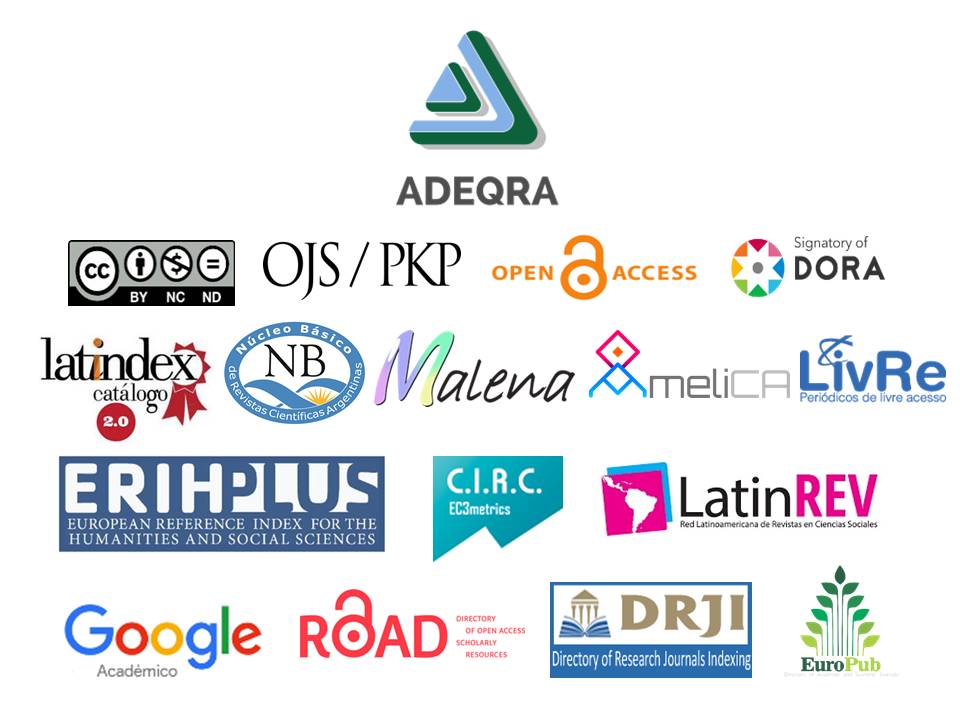Los arboles de periodicidad y los elementos del bloque d de la tabla periódica estándar
Palabras clave:
tríadas de número atómico, árboles de periodicidad, bloque dResumen
El sistema periódico basado en triadas de número atómico, propone una representación donde el criterio principal es el orden creciente de los números atómicos, y el criterio secundario se establece mediante la formación de tríadas de números atómicos, sin apelar a las configuraciones electrónicas ni ninguna consideración cuántica. Aunque la tabla propuesta se basa en triadas de números atómicos, la relación fundamental en la arquitectura de la tabla está dada por los “árboles de periodicidad”: sistemas simétricos de elementos interrelacionados por medio de las tríadas, que contienen 20 elementos cada una y toman el lugar de los grupos tradicionales. En este trabajo, desarrollaremos la propuesta de “árboles de periodicidad” y la aplicaremos a discusiones actuales en la tabla periódica, particularmente a los elementos que integran el bloque d de la tabla periódica estándar.
Citas
Bensaude-Vincent, B. (1989). Mendeleiev: historia de un descubrimiento. En M. Serres (ed.). Historia de las Ciencias, Madrid: Ediciones Cátedra.
Bent, H. (2006). New Ideas in Chemistry from Fresh Energy for the Periodic Law, Bloomington: Author House.
Borges, J. L. (2005). Obras completas, Buenos Aires: Emecé.
Cotton, F. y Wilkinson, G. (1988). Advanced Inorganic Chemistry. Nueva York: Wiley-Interscience.
Earley, J. (2009). How chemistry shifts horizons: element, substance, and the essential. Foundations of Chemistry, 11, 65-77.
Hendry, R. (2006). Substantial confusion. Studies in History and Philosophy of Science, 37 (2), 322-336.
Jensen W. (2003). The place of Zinc, Cadmium, and Mercury in the Periodic Table. Journal of Chemical Education, 80 (8), 952-961.
Lavelle, L. (2008). Lanthanum (La) and actinium (Ac) should remain in
the d-block. Journal of Chemical Education, 85 (11), 1482-1483.
Paneth, F. A. (1931). The epistemological status of the concept of element, [reimpreso en Foundations of Chemistry, 5, 113-145 (2003)].
Ruthenberg, K. (2009). Paneth, Kant and the philosophy of chemistry. Foundations of Chemistry, 11 (2), 79-91.
Scerri, E. (2005). Some aspects of the metaphysics of chemistry and the nature of the elements. HYLE – International Journal for Philosophy of Chemistry, 11 (2), 127-145.
Scerri, E. (2007). The Periodic Table – Its Story and Its Signifcance, Nueva York: Oxford University Press.
Scerri, E. (2008). The role of triads in the evolution of the periodic table: past and present. Journal of Chemical Education, 85 (4), 585-589.
Scerri, E. (2009). Which elements belong in group 3? Journal of Chemical Education, 86 (10), 1188.
Scerri, E. (2010). Explaining the periodic table, and the role of chemical triads. Foundations of Chemistry, 12 (1), 69-83.
Scerri, E. (2012). What is an element? What is the periodic table? And what does quantum mechanics contribute to the question? Foundations of Chemistry, 14 (1). 69-81.
Schwarz, E. (2007). Recommended questions on the roads towards a scientifc explanation of the periodic system of the chemical elements with the help of the concepts of quantum physics. Foundations of Chemistry, 9 (2), 139-188.
Soddy, F. (1913). Intra-atomic charge. Nature, 92, 399-400. Velenzuela Calahorro, C. (1999). Introducción a la Química Inorgánica. Madrid: Mc Graw-Hill Interamericana.
Van Spronsen, J. W. (1969). The Periodic System of Chemical Elements - A History of the First Hundred Years. Amsterdam: Elsevier Publishing Company.
Weisberg, M., Needham, P. y Hendry, R. (2011). Philosophy of chemistry. En E. N. Zalta (ed.) The Stanford Encyclopedia of Philosophy,
Stanford: Stanford University, Recuperado de: http://plato.stanford.edu/archives/win2011/entries/chemistry
Wiberg, N. (2001). Inorganic Chemistry. Berlín: Academic Press.
Zambon, A. (2018). A Representation of the Periodic System based onatomic-number triads. Foundations of Chemistry, 20 (1), 51-74.
Descargas
Publicado
Cómo citar
Número
Sección
Licencia
Derechos de autor 2019 Alfio Zambón

Esta obra está bajo una licencia internacional Creative Commons Atribución-NoComercial-SinDerivadas 4.0.



